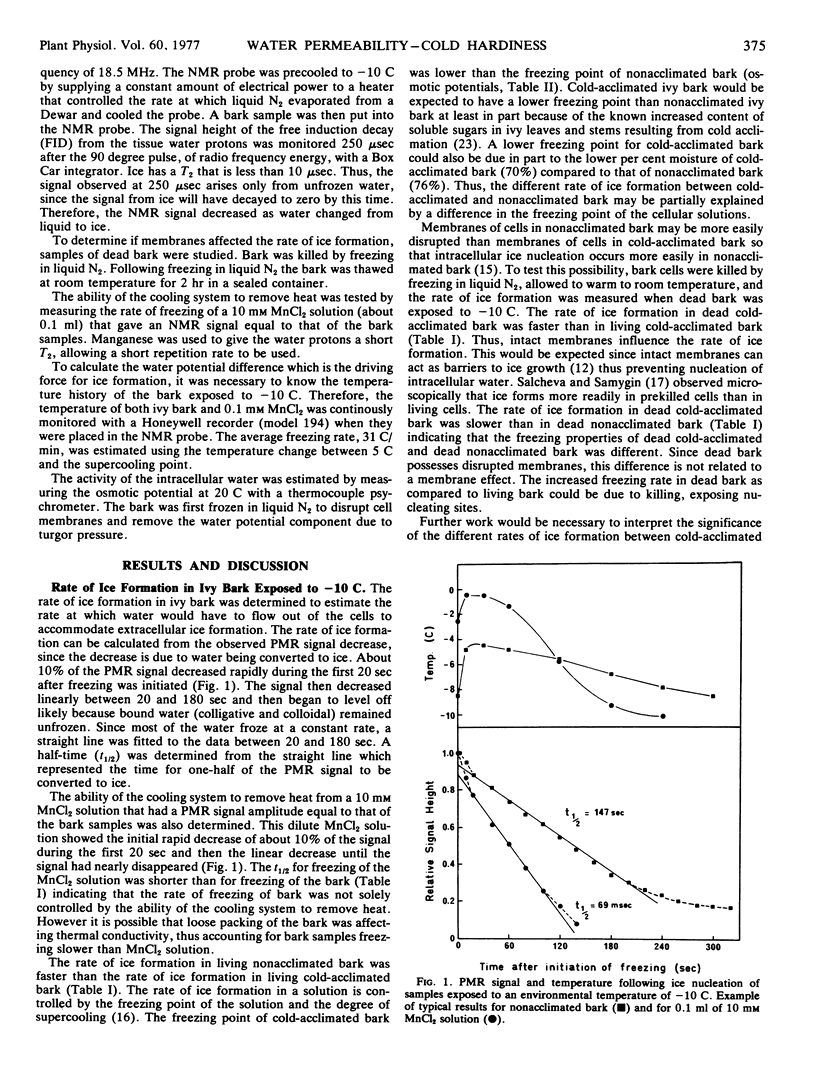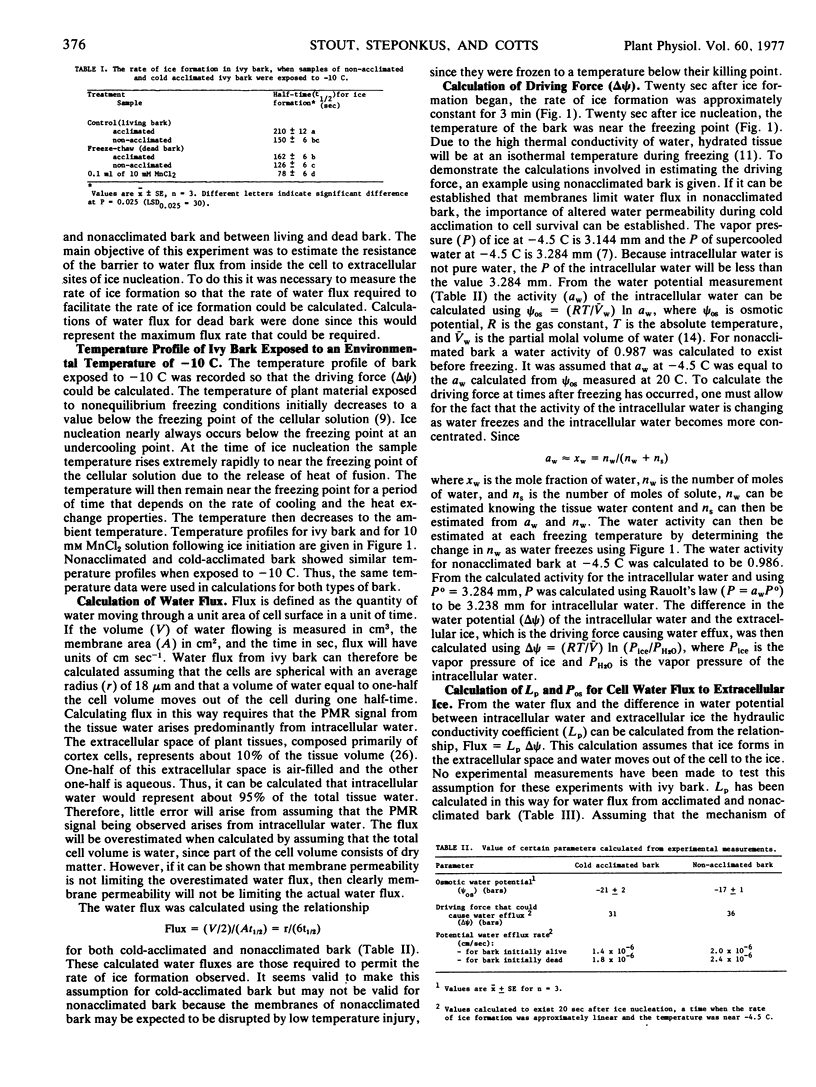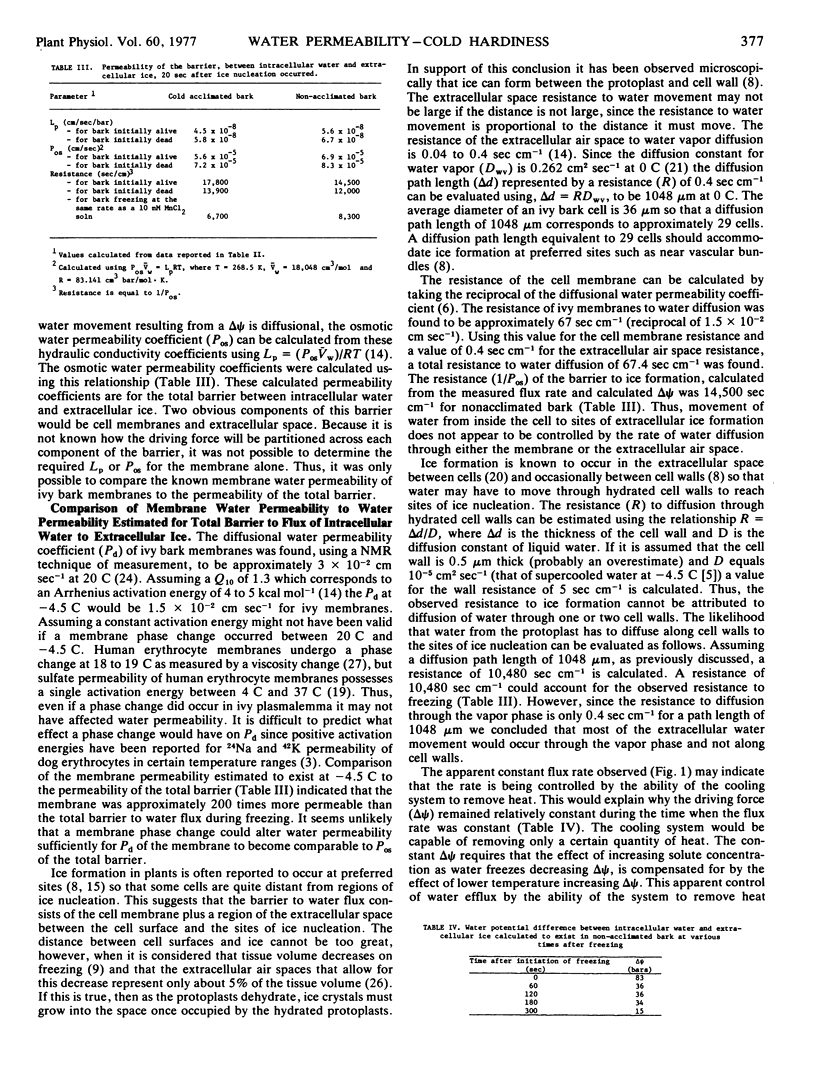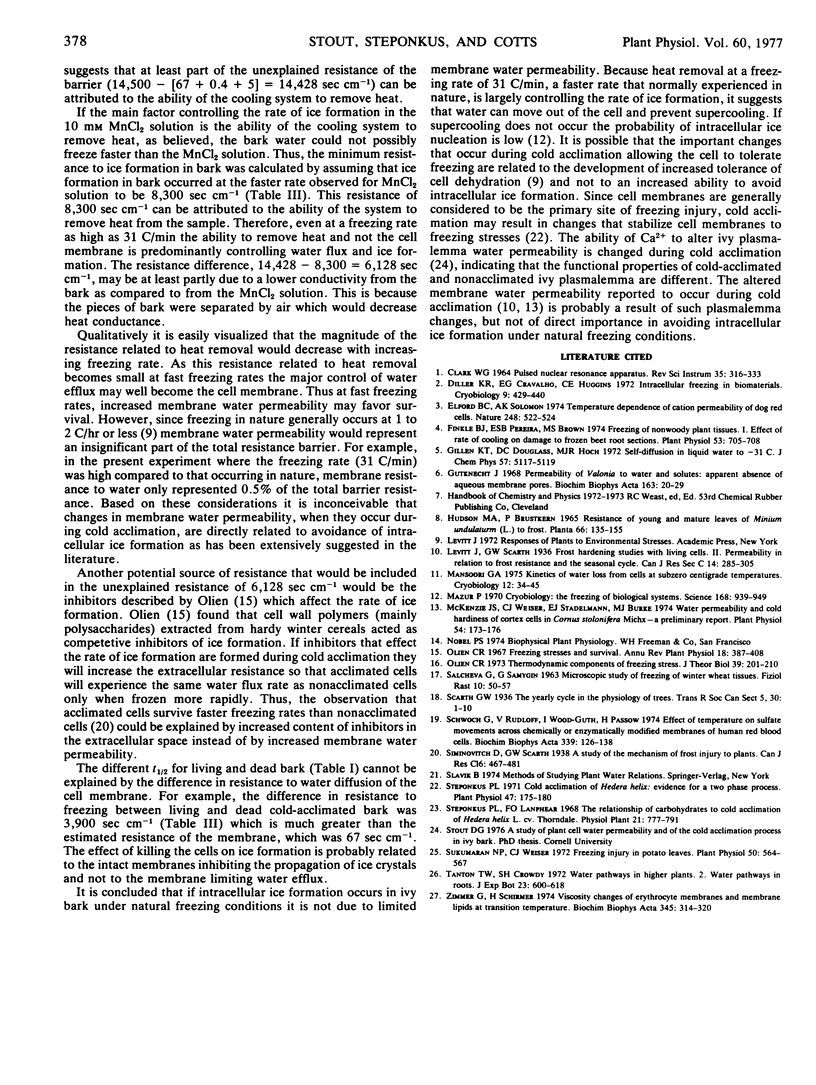Abstract
The rate of ice formation was measured for Hedera helix L. cv. Thorndale (English ivy) bark exposed to −10 C. The cooling rate of bark exposed to −10 C was 31 C per minute. The water efflux rate required for ice formation to occur extracellularly was calculated from the rate of ice formation and the average cell diameter. The water potential difference driving the efflux of water to sites of extracellular ice was calculated from the sample temperature, osmotic water potential, and fraction of water frozen at a given freezing temperature. From the water efflux rate and water potential difference, the resistance of the barrier controlling movement of intracellular water to sites of extracellular ice was calculated. Comparison of the resistance of this barrier to water movement with the resistance of the cell membrane revealed that the membrane represented only 0.5% of the barrier resistance. Thus, membrane resistance can have little influence on the rate of water efflux and ice formation when bark is cooled at a rate of 31 C per minute. If ice formation occurred at the same rate in ivy bark as it occurred in a 10 mm MnCl2 solution, the membrane resistance would still have represented only 1% of the resistance of the barrier to ice formation. Therefore, at a cooling rate of 31 C/minute, heat removal plays a large part in determining the rate of ice formation. At slower cooling rates experienced under natural freezing conditions the ability to remove heat would play an even larger role. It is concluded that under natural freezing conditions membrane resistance does not limit water efflux.
Full text
PDF




Selected References
These references are in PubMed. This may not be the complete list of references from this article.
- Diller K. R., Cravalho E. G., Huggins C. E. Intracellular freezing in biomaterials. Cryobiology. 1972 Oct;9(5):429–440. doi: 10.1016/0011-2240(72)90160-5. [DOI] [PubMed] [Google Scholar]
- Elford B. C., Solomon A. K. Temperature dependence of cation permeability of dog red cells. Nature. 1974 Apr 5;248(448):522–524. doi: 10.1038/248522a0. [DOI] [PubMed] [Google Scholar]
- Finkle B. J., Pereira E. S., Brown M. S. Freezing of nonwoody plant tissues: I. Effect of rate of cooling on damage to frozen beet root sections. Plant Physiol. 1974 May;53(5):705–708. doi: 10.1104/pp.53.5.705. [DOI] [PMC free article] [PubMed] [Google Scholar]
- Gutknecht J. Permeability of Valonia to water and solutes: apparent absence of aqueous membrane pores. Biochim Biophys Acta. 1968 Aug;163(1):20–29. doi: 10.1016/0005-2736(68)90028-x. [DOI] [PubMed] [Google Scholar]
- Mazur P. Cryobiology: the freezing of biological systems. Science. 1970 May 22;168(3934):939–949. doi: 10.1126/science.168.3934.939. [DOI] [PubMed] [Google Scholar]
- McKenzie J. S., Weiser C. J., Stadelmann E. J., Burke M. J. Water Permeability and Cold Hardiness of Cortex Cells in Cornus stolonifera Michx.-A Preliminary Report. Plant Physiol. 1974 Aug;54(2):173–176. doi: 10.1104/pp.54.2.173. [DOI] [PMC free article] [PubMed] [Google Scholar]
- Olien C. R. Thermodynamic components of freezing stress. J Theor Biol. 1973 Apr;39(1):201–210. doi: 10.1016/0022-5193(73)90217-8. [DOI] [PubMed] [Google Scholar]
- Schwoch G., Rudloff V., Wood-Guth I., Passow H. Effect of temperature on sulfate movements across chemically or enzymatically modified membranes of human red blood cells. Biochim Biophys Acta. 1974 Feb 26;339(1):126–138. doi: 10.1016/0005-2736(74)90338-1. [DOI] [PubMed] [Google Scholar]
- Steponkus P. L. Cold Acclimation of Hedera helix: Evidence for a Two Phase Process. Plant Physiol. 1971 Feb;47(2):175–180. doi: 10.1104/pp.47.2.175. [DOI] [PMC free article] [PubMed] [Google Scholar]
- Sukumaran N. P., Weiser C. J. Freezing injury in potato leaves. Plant Physiol. 1972 Nov;50(5):564–567. doi: 10.1104/pp.50.5.564. [DOI] [PMC free article] [PubMed] [Google Scholar]


